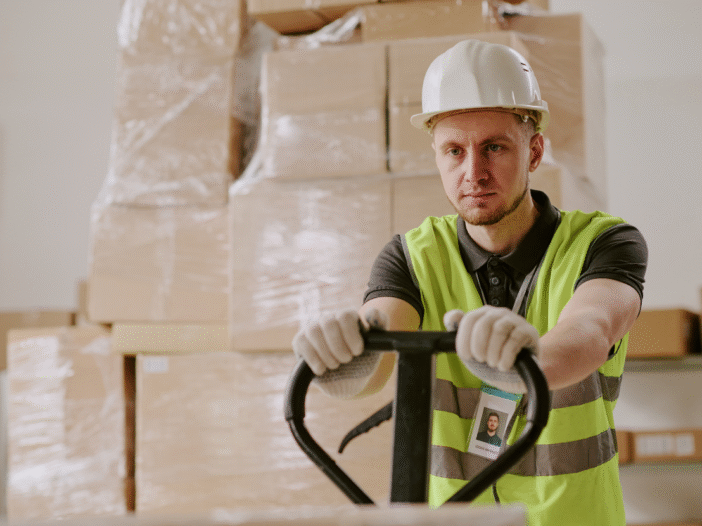
The hybrid workplace is a permanent feature of working life, with many organisations adopting flexible models that enable employees to split their time between home and the office. While this shift offers significant benefits for employers and employees, it also presents challenges for workplace health and safety compliance.
In this article, we talk about how employers can adapt their risk management strategies to ensure employees remain safe, and compliance with health and safety laws is maintained.
What are an employer’s legal responsibilities in a hybrid workplace?
Here are the health and safety laws that apply to all workplaces, along with guidance on how employers can ensure compliance in a hybrid working environment.
Health and Safety at Work etc. Act 1974
This foundational legislation places a duty of care on employers to protect the health, safety, and welfare of their employees, regardless of where they work. Organisations must manage workplace risks effectively, provide safe systems of work, and ensure employees have the necessary training and equipment to perform their jobs safely.
The Health and Safety at Work Act also requires employees to take reasonable care of their own health and safety, which is particularly relevant in hybrid working arrangements where direct supervision may be limited.
Management of Health and Safety at Work Regulations 1999
The Management of Health and Safety at Work Regulations require employers to carry out risk assessments to identify hazards and implement measures to reduce risks in office and home working environments.
Employers must ensure that hybrid workers are provided with adequate training, supervision, and access to support so they can maintain a safe working setup. Specific risks associated with remote working, such as lone working, poor ergonomics, and mental health challenges, must also be considered (more about this below).
The Regulatory Reform (Fire Safety) Order 2005
Employers are legally responsible for fire safety within their premises, which includes conducting fire risk assessments, maintaining emergency evacuation procedures, and ensuring that enough fire wardens are present (we talk about this in more detail under ‘fire safety’ below).
In hybrid workplaces, fluctuating office occupancy means fire safety arrangements need to be regularly reviewed. Employees working remotely should also receive guidance on fire safety in their home workspace, such as keeping escape routes clear and checking smoke alarms.
Health and Safety (Display Screen Equipment) Regulations 1992
The Health and Safety (Display Screen Equipment) Regulations 1992 apply to employees who regularly use computers, laptops, or other display screen equipment for extended periods.
Employers are legally required to conduct workstation assessments for employees working in the office and at home, ensuring that their setup is ergonomically safe. This includes providing guidance on correct posture, screen positioning, and chair support, as well as offering equipment such as ergonomic keyboards or adjustable desks where necessary.
Poor workstation setup can lead to musculoskeletal disorders, eye strain, and repetitive strain injuries, which can be mitigated through proper assessments and adjustments.
The Manual Handling Operations Regulations 1992
Under the Manual Handling Operations Regulations 1992 manual handling tasks, such as lifting, carrying, pushing, or pulling heavy items, must be assessed to minimise risks. Employers must ensure that employees, whether they work in an office or remotely, are trained in proper lifting techniques to prevent injuries.
If employees need to move office equipment between home and work locations, organisations should provide appropriate guidance on safe lifting and consider alternatives like lightweight equipment or home delivery options to reduce risks.
Health and Safety (First Aid) Regulations 1981
Under the Health and Safety (First Aid) Regulations 1981, employers must ensure that appropriate first-aid arrangements are in place, even in a hybrid workplace where employee presence fluctuates.
Organisations must assess the number of trained first aiders required based on office occupancy levels and ensure that adequate first-aid facilities are always available. For remote workers, employers should provide clear guidance on emergency procedures and consider issuing personal first-aid kits if necessary (more about this under ‘first aid’ below).
The Workplace (Health, Safety and Welfare) Regulations 1992
The Workplace (Health, Safety and Welfare) Regulations 1992 require employers to maintain a safe and comfortable working environment for employees. While usually applied to office spaces, employers must also consider home working conditions in a hybrid setup.
Factors such as adequate lighting, ventilation, temperature control, and regular breaks should be considered to promote employee wellbeing. Employers may need to provide guidance on setting up a safe home office space, ensuring that remote employees can work effectively in a comfortable and hazard-free environment.
The Lone Working Guidance (HSE)
The Health and Safety Executive’s lone working guidance states that employers must assess and mitigate risks for lone workers, particularly those working from home without supervision. Organisations should implement regular check-ins, mental health support, and emergency contact procedures to ensure remote employees remain safe.
Providing clear reporting mechanisms for accidents or concerns is essential to maintain compliance with lone working best practices.
The Equality Act 2010
Under the Equality Act 2010, employers must make reasonable adjustments for employees with disabilities, ensuring they can work safely and effectively in a hybrid environment. This could include providing specialist equipment, adjusted working hours, or remote support.
Hybrid workplaces should be inclusive, with employers taking proactive steps to accommodate employees who may need additional support to work comfortably from home or in the office.
Health and safety considerations for a hybrid workplace
Here we explore how to manage a hybrid workplace to protect employees’ health and safety and ensure legal compliance.
Fire safety
Hybrid working has changed the way organisations manage fire safety, but employers remain legally responsible for fire safety under the Regulatory Reform (Fire Safety) Order 2005 (see the section on employers’ legal responsibilities above).
Fire risk assessments
Fluctuating office occupancy presents challenges for fire safety, making it essential for employers to regularly review and update their fire risk assessments. Emergency procedures must be adapted to reflect changing occupancy levels, ensuring that all employees in the office are aware of evacuation routes and protocols.
Clear communication of fire safety procedures is critical. Employers must ensure that hybrid workers understand what to do in the event of a fire, including any changes to assembly points or roll-call systems.
Providing fire safety guidance through training, digital resources, or regular reminders helps reinforce compliance and ensures that fire safety remains a priority, regardless of where employees work.
Fire wardens
The number of fire wardens required in a workplace must be determined through a fire risk assessment, as required under the Regulatory Reform (Fire Safety) Order 2005.
Government fire safety guidance advises that the responsible person must ensure an appropriate number of trained staff are available to implement fire safety measures effectively. Factors influencing this decision include the size and layout of the premises, the number of occupants, the nature of work activities, and specific fire hazards.
For hybrid workplaces, where office occupancy fluctuates, it is essential to review daily attendance patterns. Employers should ensure that a sufficient number of fire wardens are on-site during all working hours.
Home workers
While the Fire Safety Order does not apply to private homes, employers must still consider fire safety guidance for remote employees as part of their duty of care under the Health and Safety at Work Act 1974.
Employers should provide fire safety advice to home workers, including guidance on safe use of electrical equipment and avoiding overloaded sockets. Employees should be encouraged to check their home smoke alarms regularly and ensure they have access to a basic fire extinguisher or fire blanket.
It is advisable to consider offering basic online training on electrical safety and fire safety.
Ergonomics
One of the most significant risks for hybrid employees is poor workstation setup, which can lead to musculoskeletal disorders, eye strain, and fatigue. Employees must understand the risks and how to mitigate them through display screen equipment training.
Employers should conduct display screen equipment (DSE) assessments to ensure employees have a safe and comfortable home working environment. This includes providing guidance on maintaining good posture by correctly positioning desks and chairs. Screens should be set at an appropriate height and brightness to minimise eye strain, and employees may benefit from ergonomic equipment such as adjustable chairs, footrests, and wrist supports.
Regular DSE self-assessments enable employees to identify risks and request additional support or equipment where necessary.
First aid
With hybrid working, employers must ensure that an adequate number of trained first aiders are present whenever employees are in the office. This might mean training additional staff and implementing a rota system to guarantee coverage during all working hours. To find out what is meant by an ‘adequate number of trained first aiders’, please read our article, how many first aiders do I need at work?
When people are working from home an employer does not need to supply first aid equipment for low-risk, deskwork because normal home first aid supplies are adequate. However, for higher-risk activities or lone working, employers should assess risks and may need to provide appropriate first aid kits, training, and clear emergency procedures.
The Health and Safety Executive recommends including remote and lone workers in first aid needs assessments to ensure they have adequate support.
Lone working risks
Hybrid employees often work alone, increasing the risk of delayed emergency response in the event of an accident or health issue. To manage this risk, employers should implement a lone worker policy that includes regular check-ins with managers or colleagues to ensure employees are safe and supported. Emergency contact procedures should be clearly communicated, so employees know how to seek help when needed.
For those working in more isolated conditions or engaging in higher-risk activities, additional safety measures such as personal alarms, lone worker monitoring systems, or GPS tracking may be necessary. For further practical tips, please read our article, lone worker health and safety.
Providing lone working awareness training equips employees with the knowledge to assess risks, respond to emergencies, and follow best practices when working alone.
Mental health and wellbeing
According to the Mental Health Foundation, prolonged remote work can contribute to loneliness and reduced social interaction, which are key risk factors for poor mental health. The Health and Safety Executive (HSE) highlight workplace stress as a major cause of absenteeism, with 16.4 million working days lost to stress, depression, or anxiety in 2023/24.
Employers should consider providing stress awareness training to help employees manage workloads effectively and prevent burnout. Mental health awareness training can provide managers with the skills to recognise mental health concerns and provide appropriate support. Training can help to create a more resilient, engaged and productive workforce.
For further ways to promote mental health in the workplace, please see our article, how to tackle mental health at work.
Praxis42 health and safety training for hybrid workers
Hybrid working presents unique health and safety challenges, from workstation ergonomics and fire safety to mental wellbeing and lone working risks. Praxis42 offers expert-led training to help employers meet their legal obligations while promoting a safe and healthy work environment.
Our courses, including Display Screen Equipment (DSE) Training, Lone Working Awareness Training, Mental Health Awareness Training, Office Manual Handling Training and Stress Awareness Training, provide employees with the knowledge and confidence to work safely, whether in the office or remotely.
Find out more about these courses on our website, or contact our friendly team today on 0203 011 4242/info@praxis42.com

Adam Clarke
Managing Director (Consulting)
